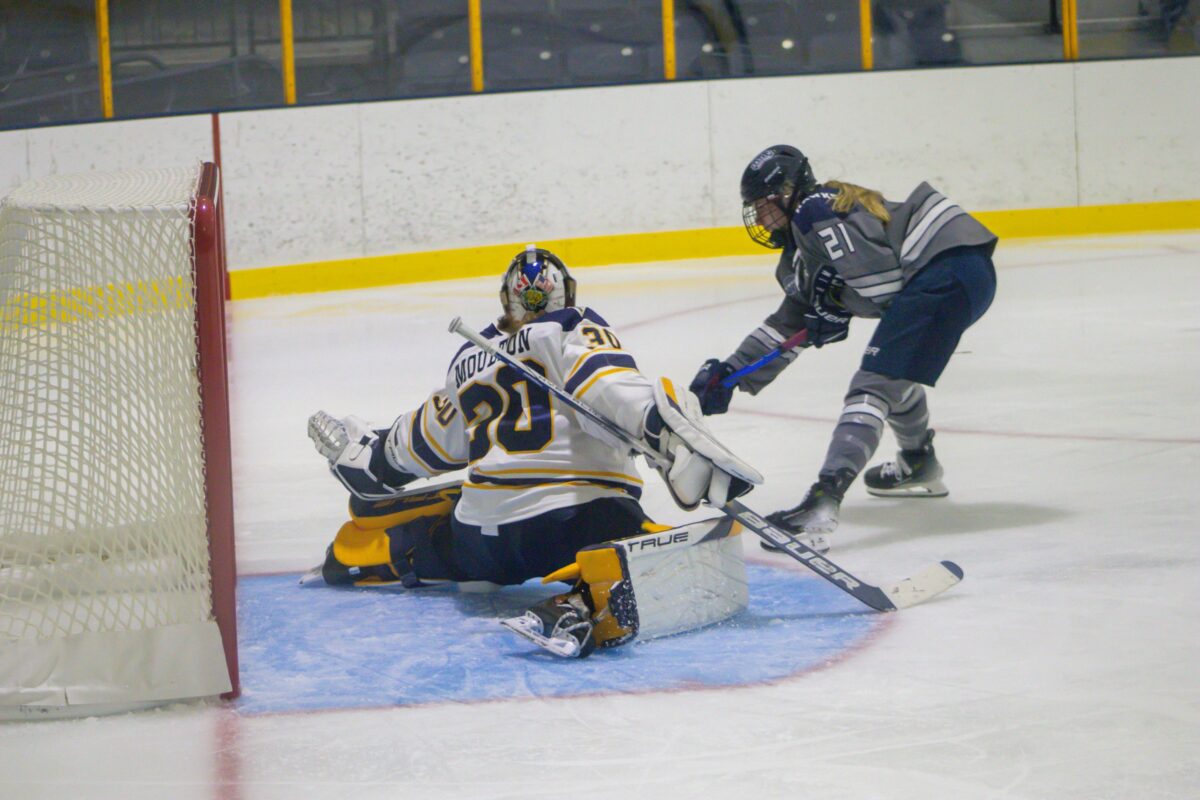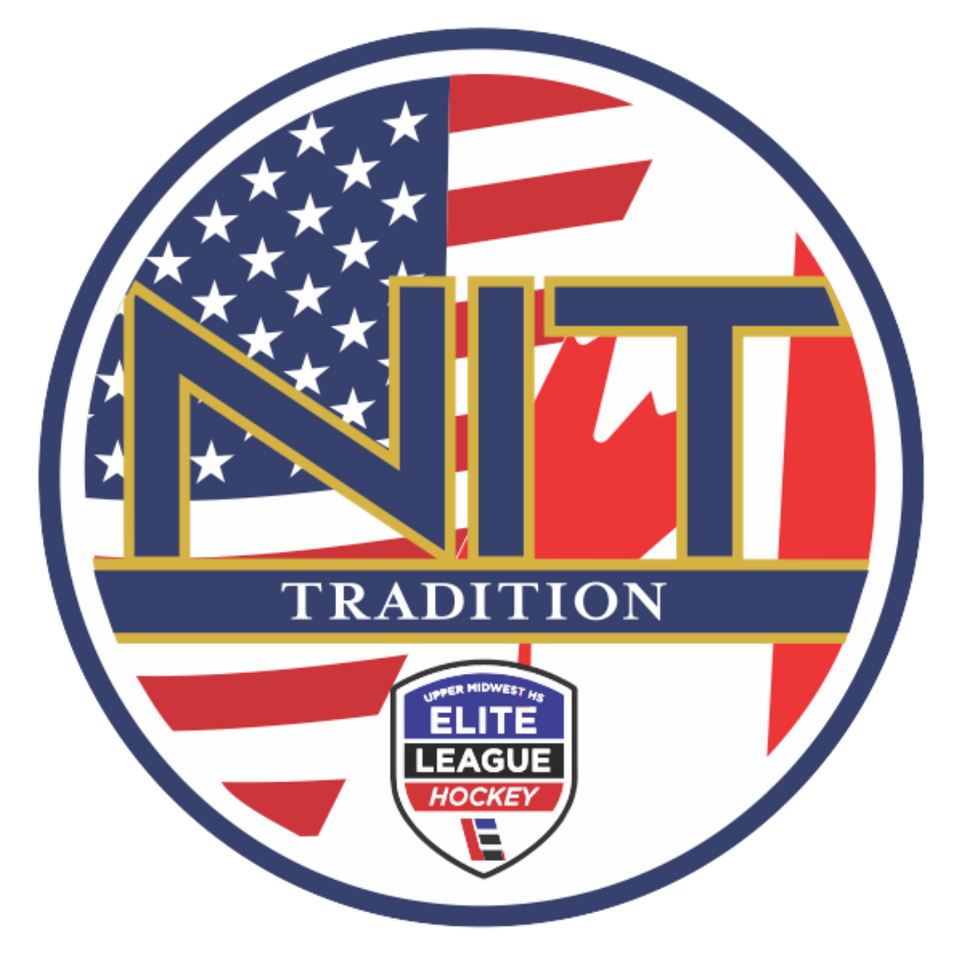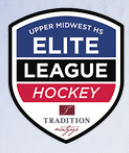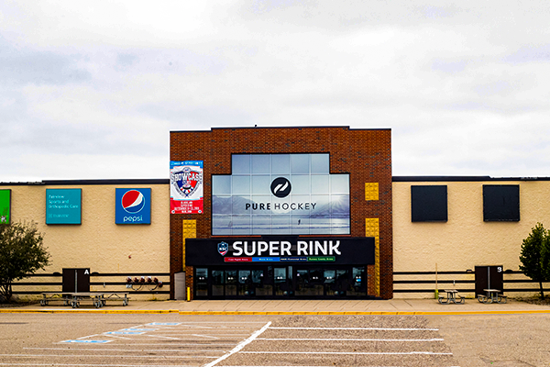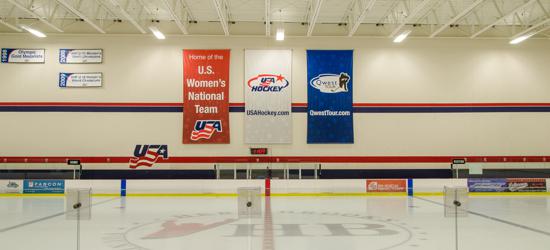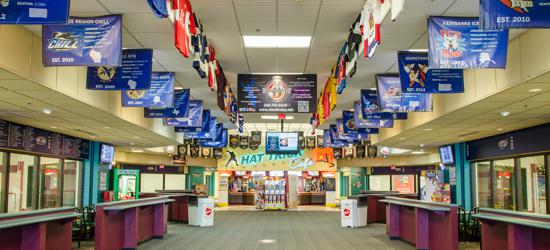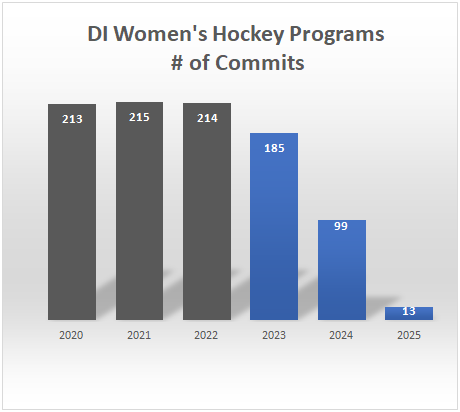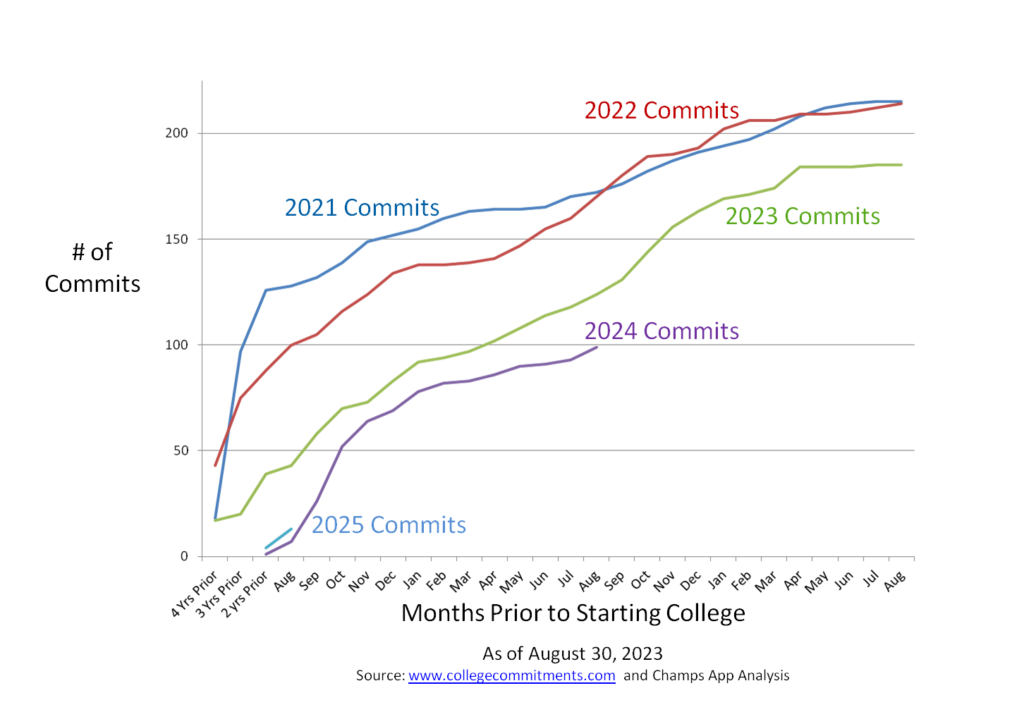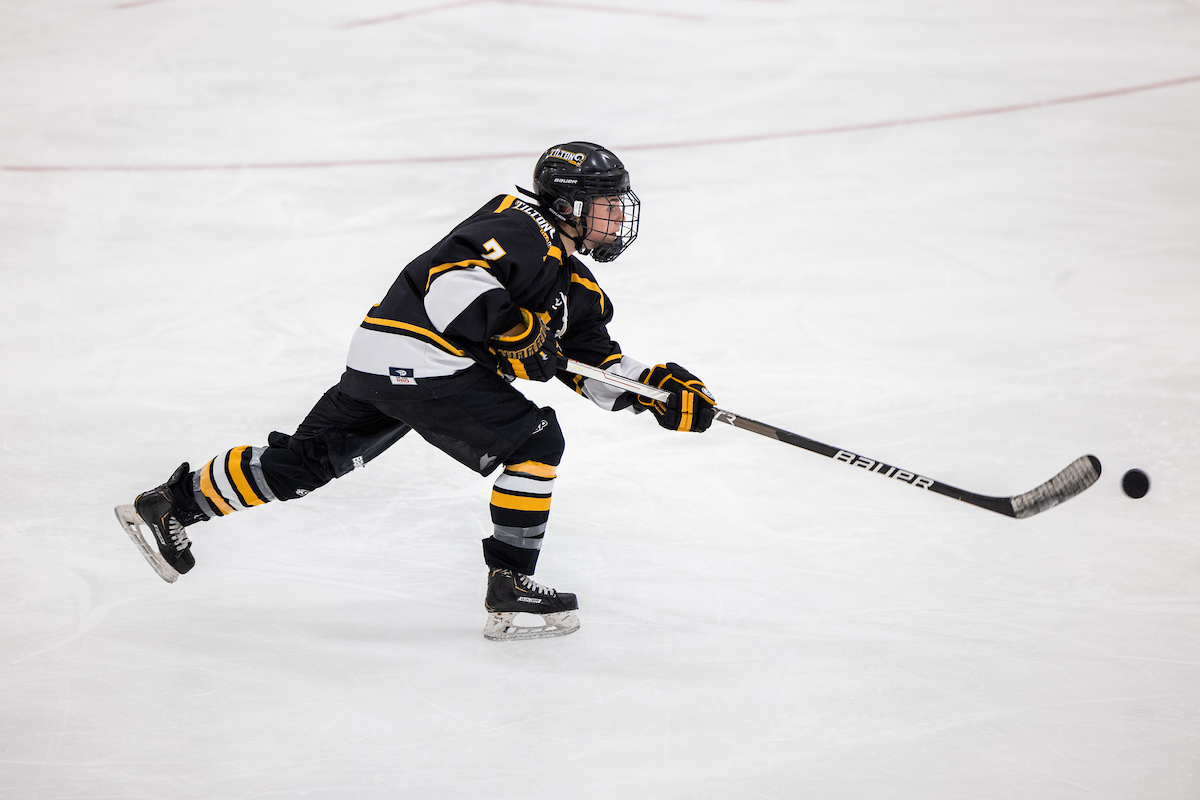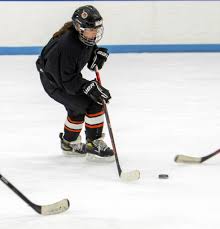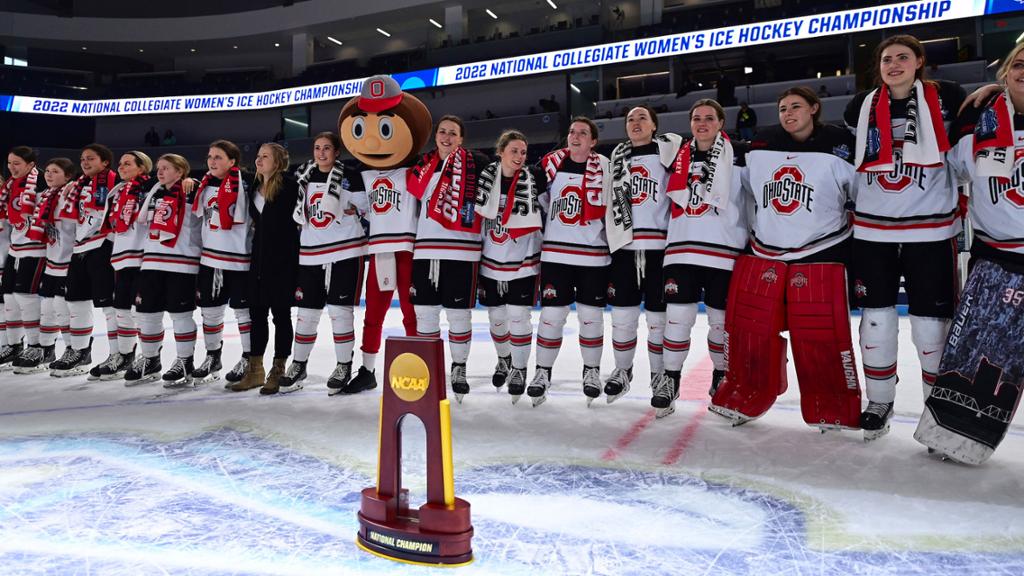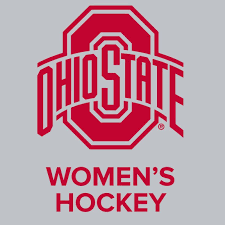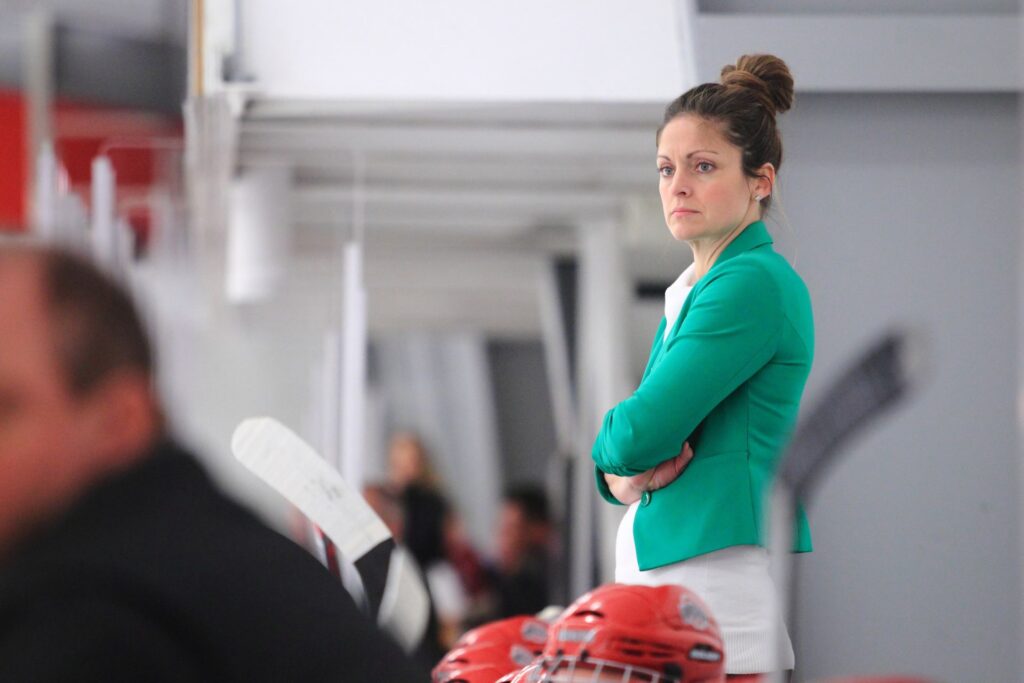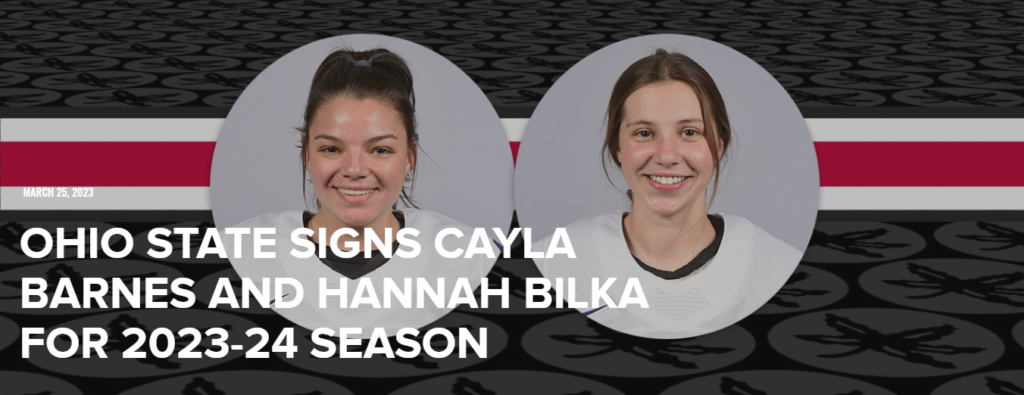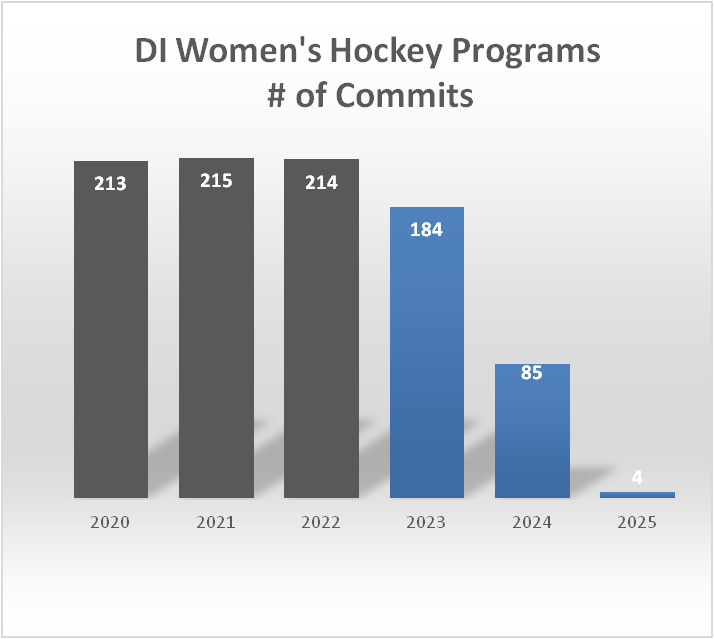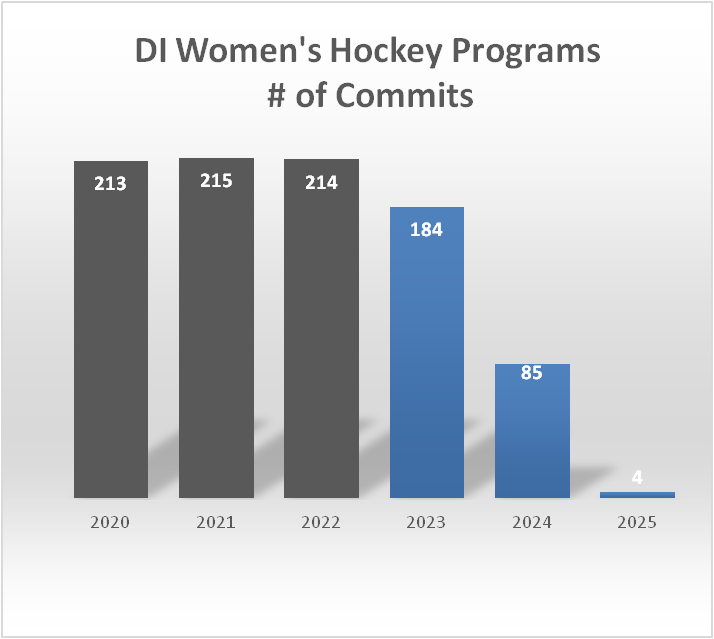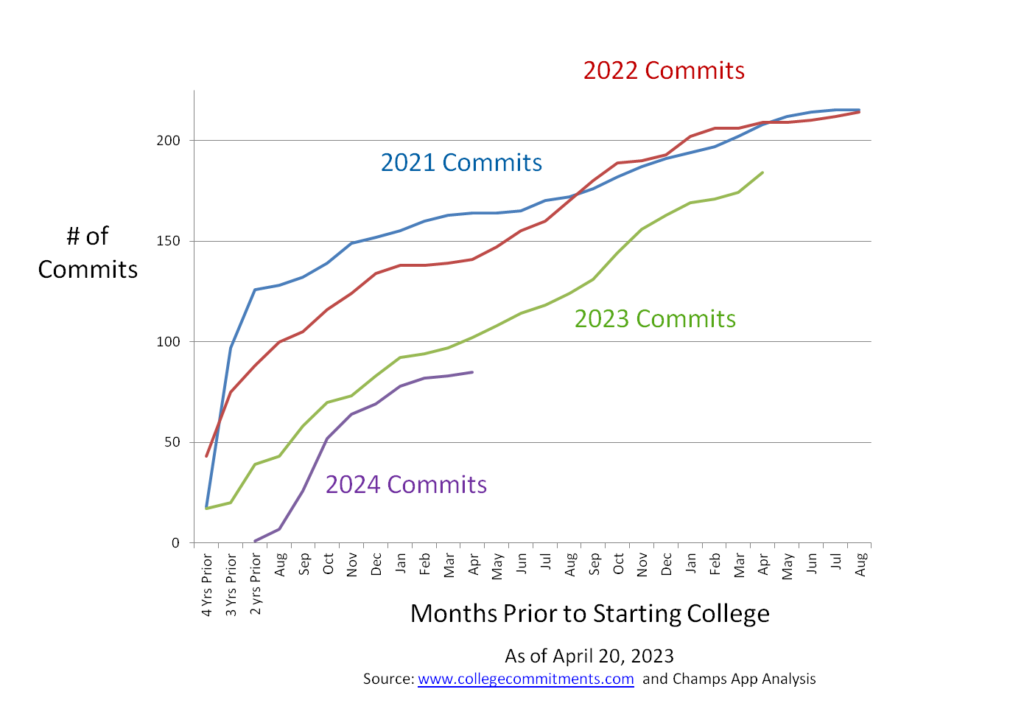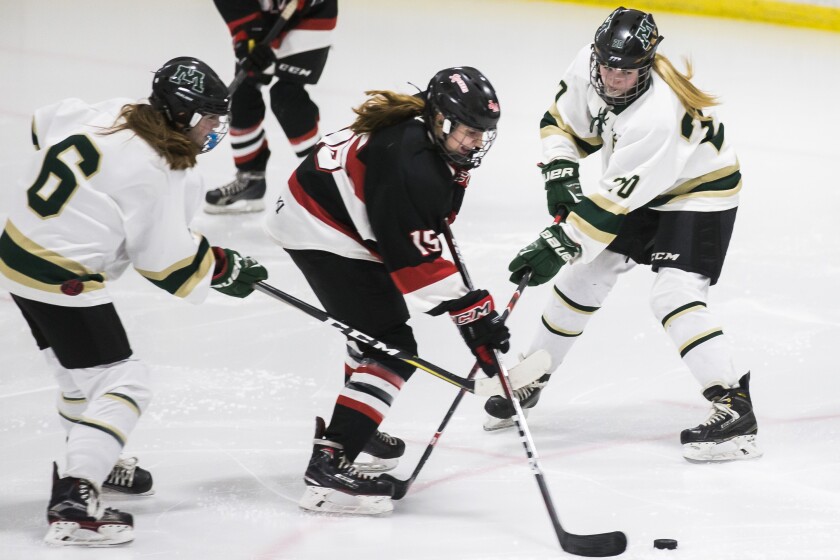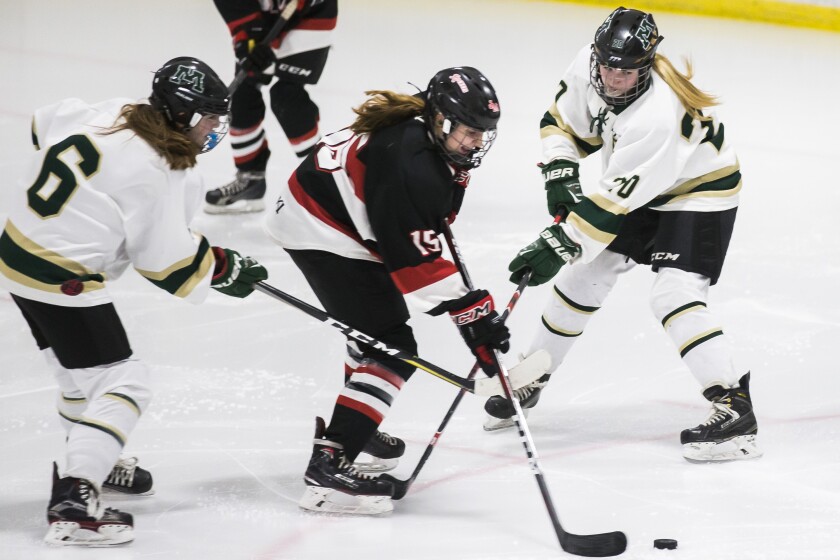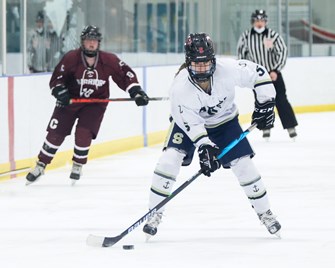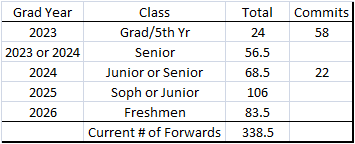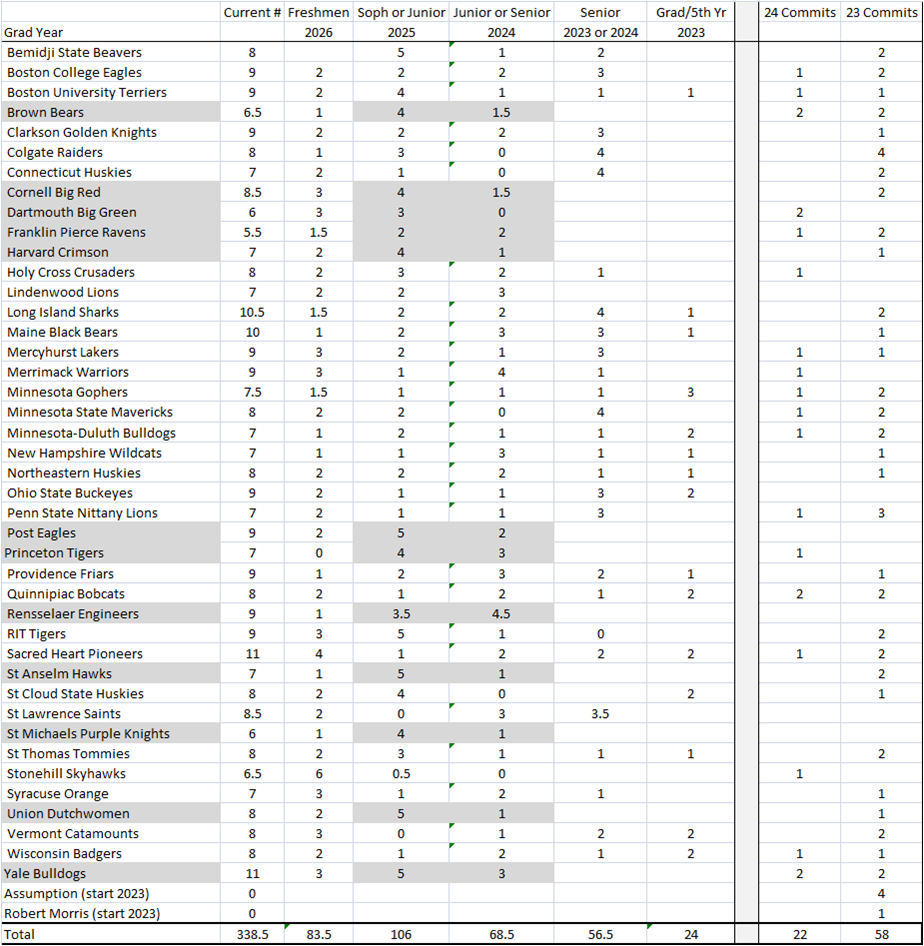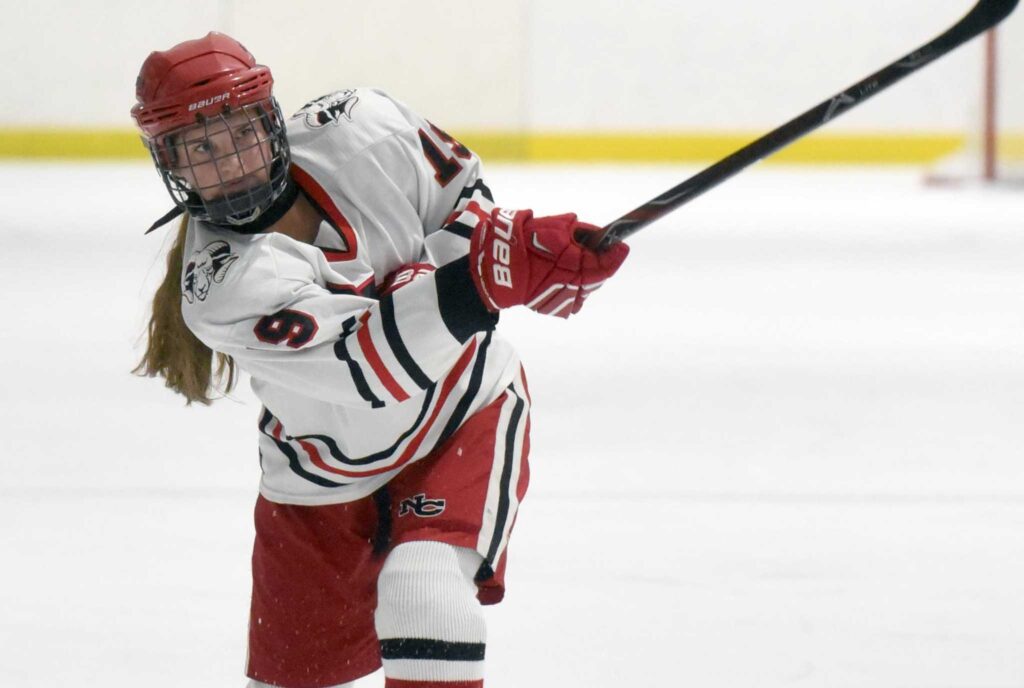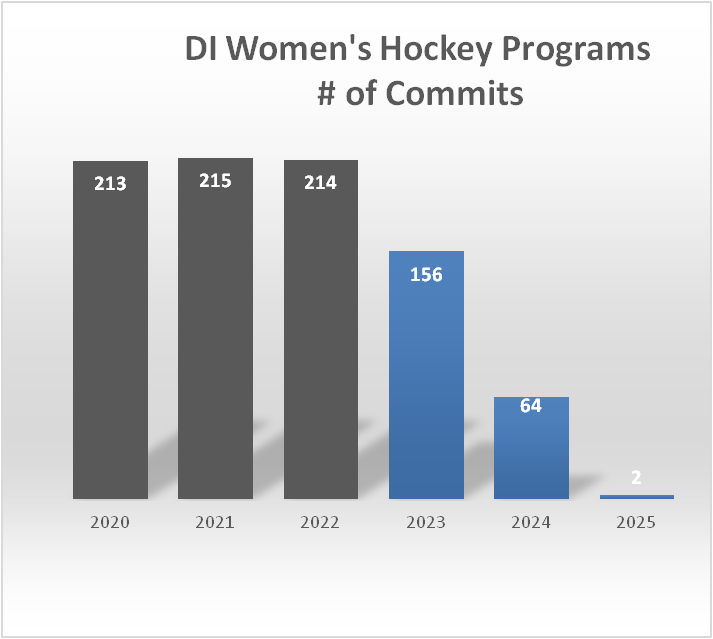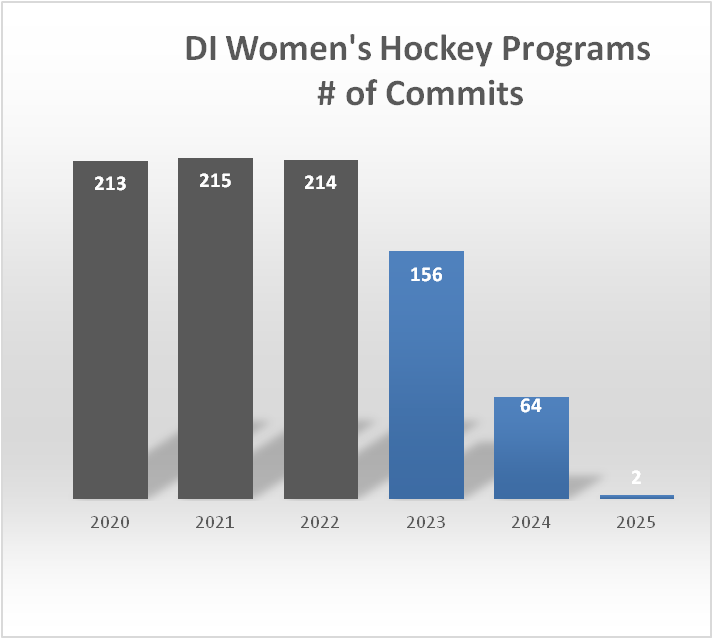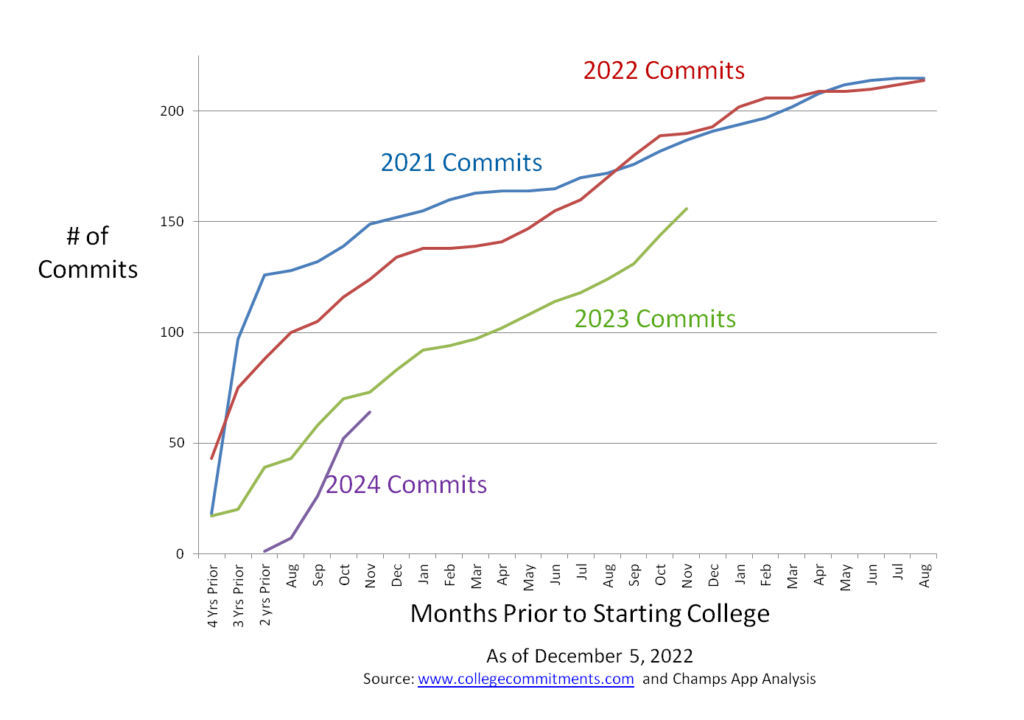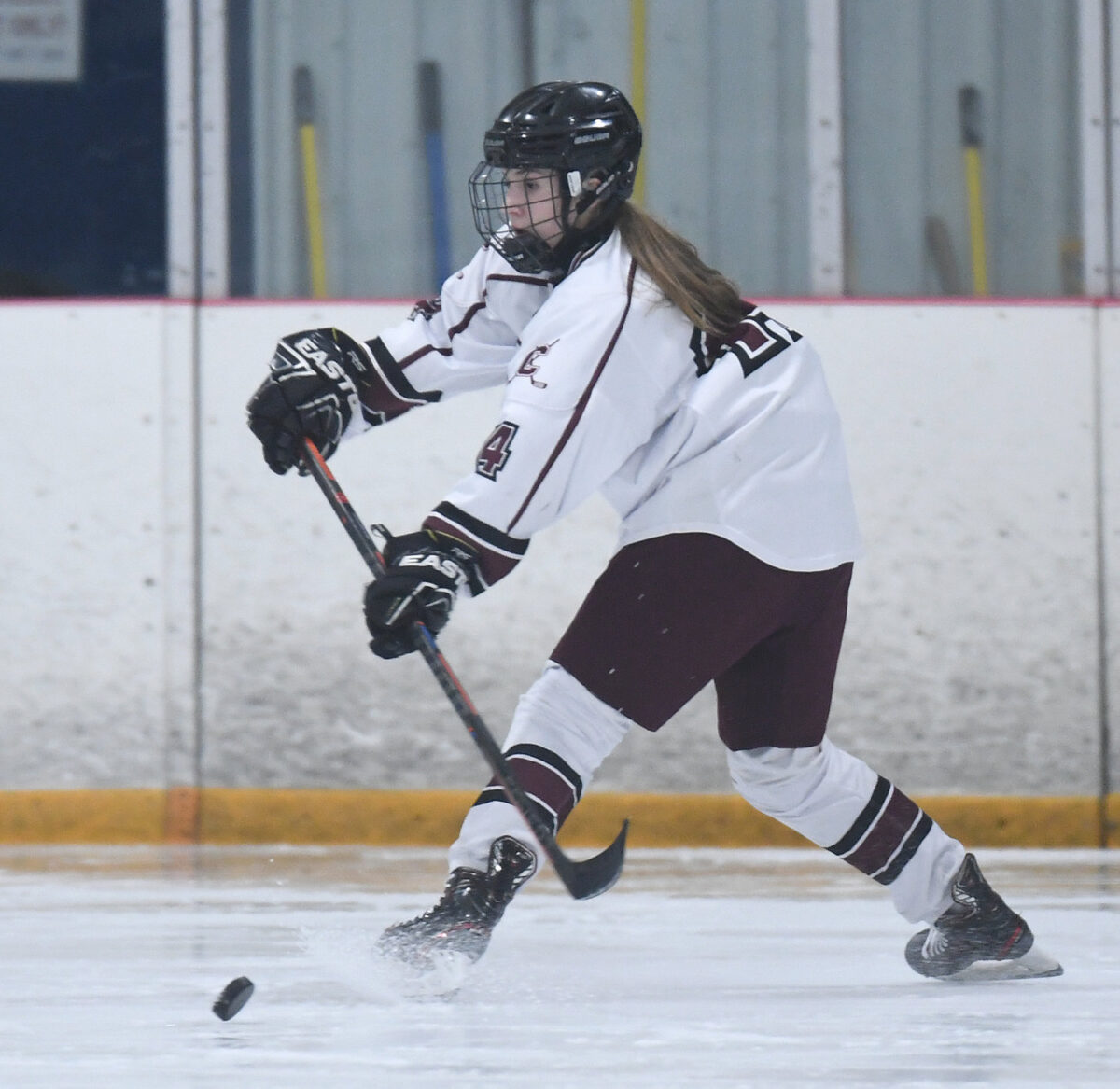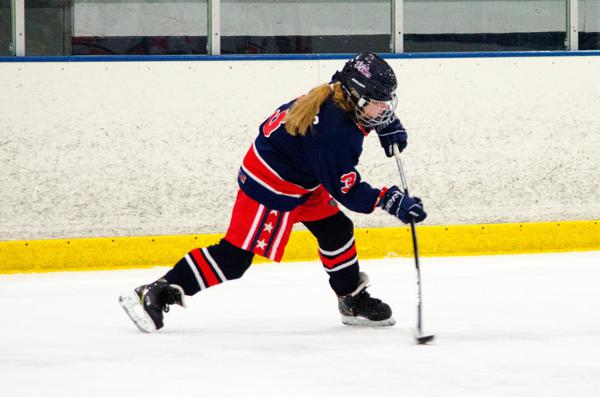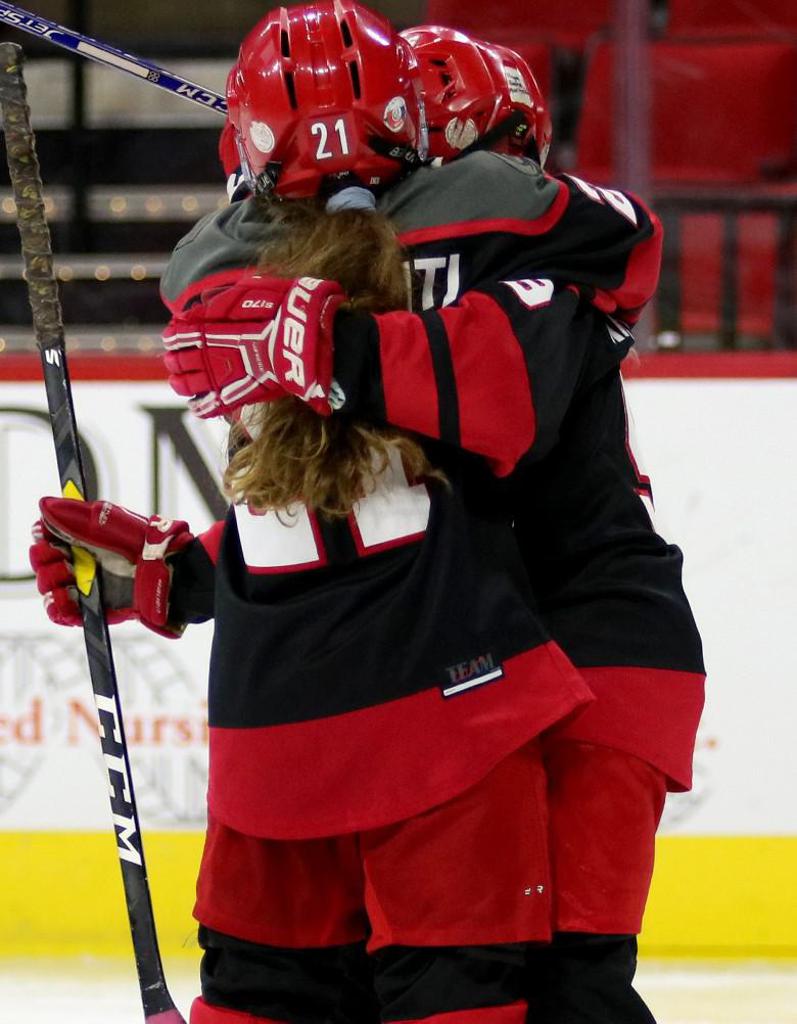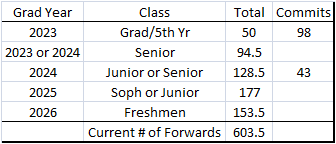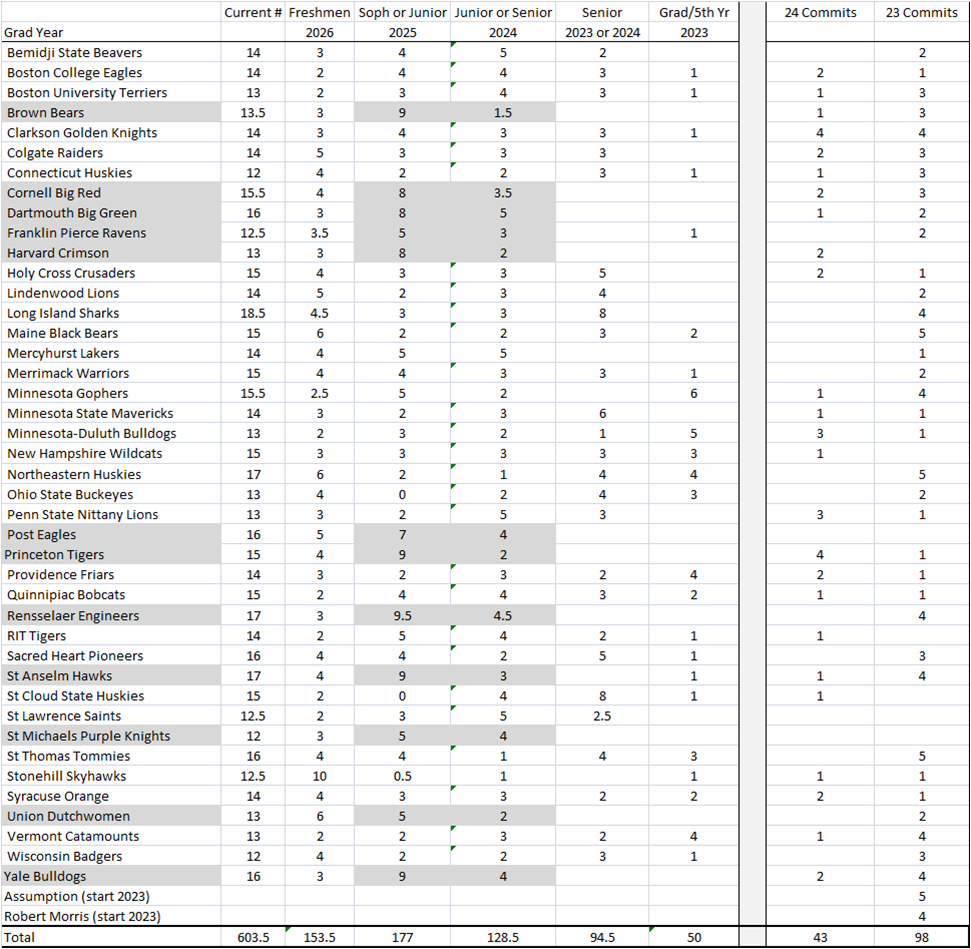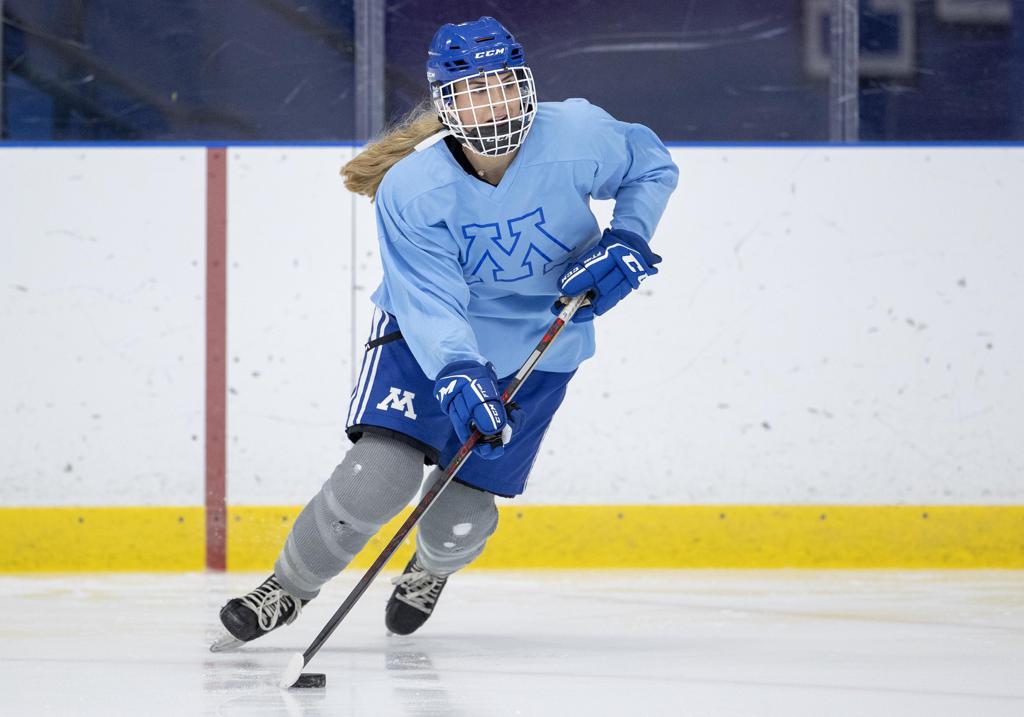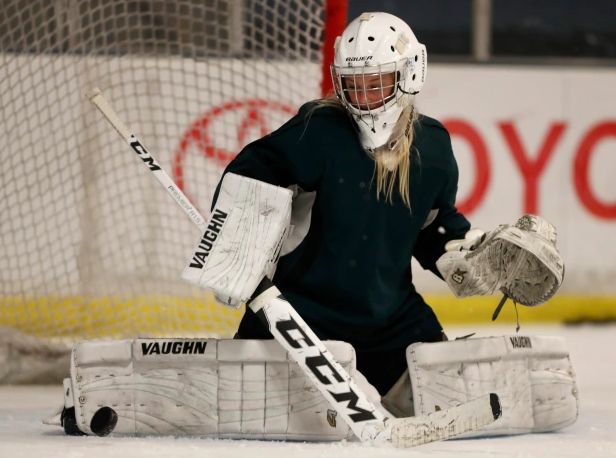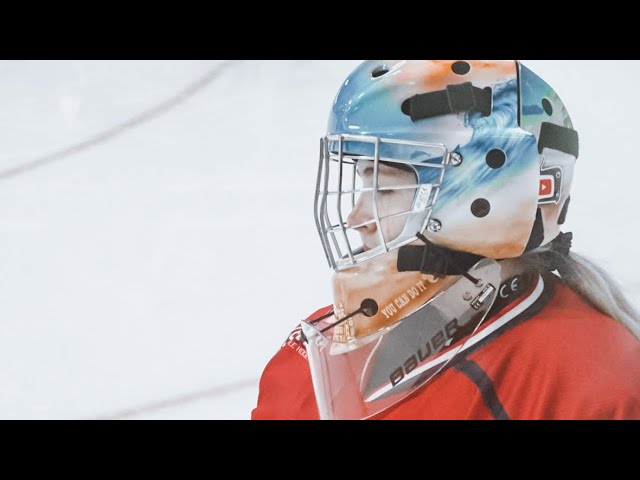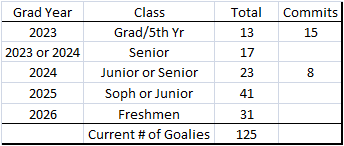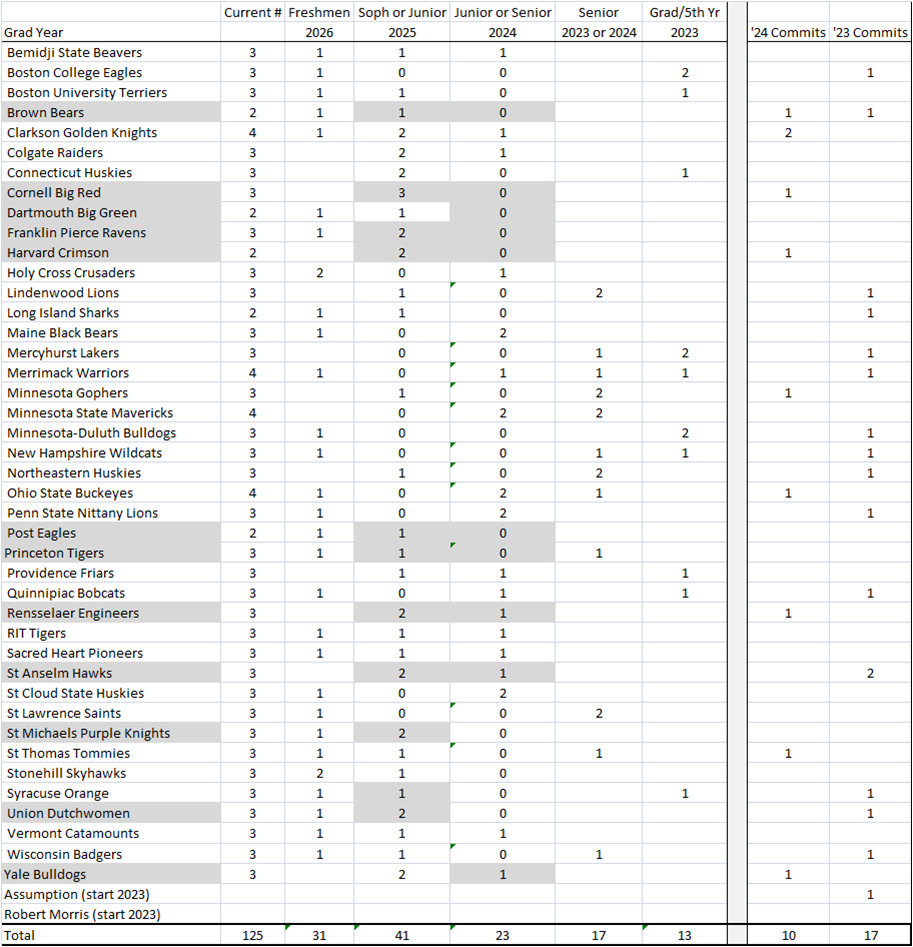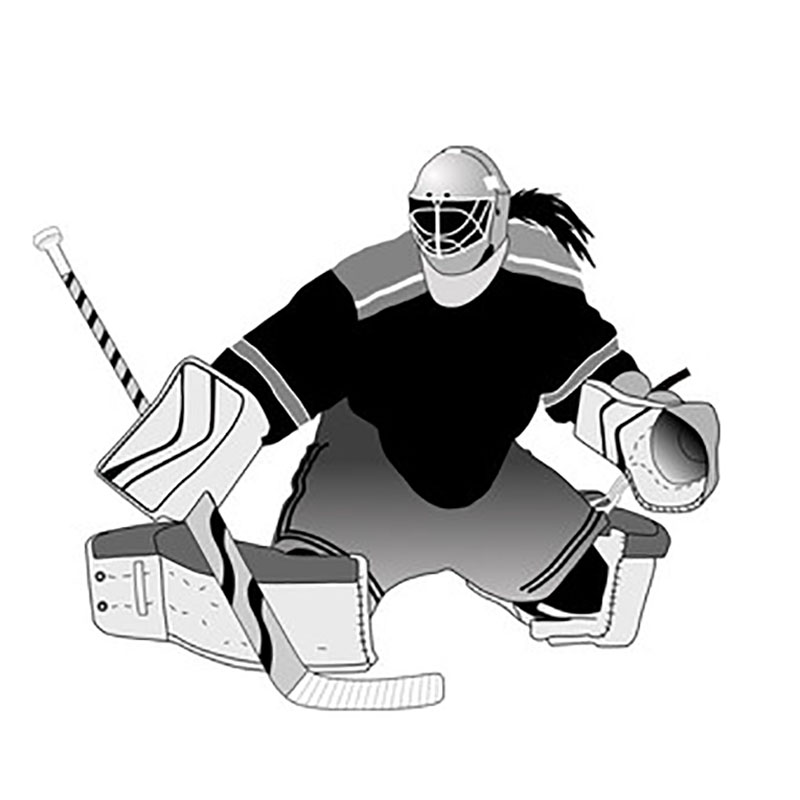Updated Dec. 14, 2023
This is the first of 3 posts about where things stand for each position – Goalies, Forwards and Defense – for the incoming classes of 2024 and 2025.
Read Part II of this series here: Forward Recruits: The Current State of Division I Women’s College Hockey Recruiting for the Class of 2024 & 2025
Read Part III of this series here: Analyzing the Defensive Lineups: The Current State of Division I Women’s College Hockey Recruiting for the Class of 2024 & 2025
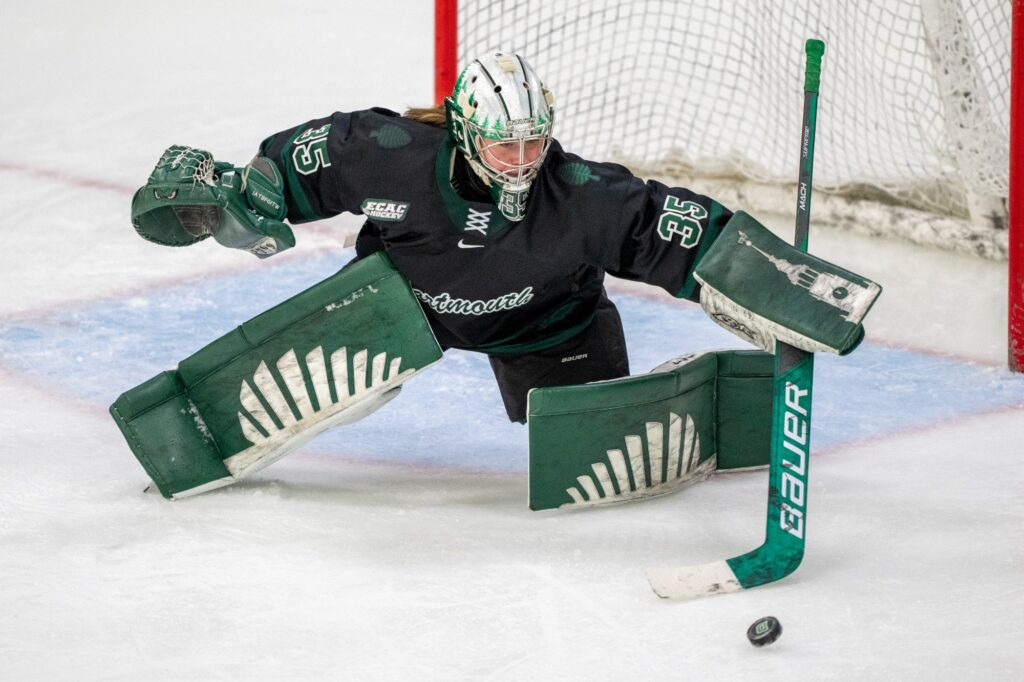
The last couple of years have been tough for high level goalies looking for a spot to play Division I women’s college hockey. With the NCAA granting an extra year of eligibility for current seniors and grad students, it was anticipated that there were less openings available for the upcoming classes. In a typical year there should be 33 freshman goalies (3 goalies per team x 44 teams ÷ 4 years of eligibility). However, with the two new teams that started in 2023 (Assumptions and Robert Morris) and 10 teams carrying 4 goalies, it was surprising to see that there were 39 first-year goalies on DI teams this year – significantly more than in previous years.
Women’s DI College Hockey Total Goalie Player & Commits by Year
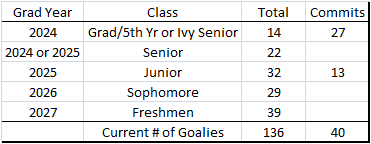
as of December, 2023
This is in addition to the transfer portal, which was very active for goaltenders this past off-season with 22 goalies looking for new teams. Of note, only 7 of them found new DI teams, made up mostly of experienced goaltenders with only 1 or 2 years of eligibility left.
(December Update) From my analysis it looks like there probably are no more spots left for the class of 2024. Any schools which appear to still have openings are likely intentionally waiting to see who becomes available via the transfer portal – there are already Covid 5th year players in the portal for next season.
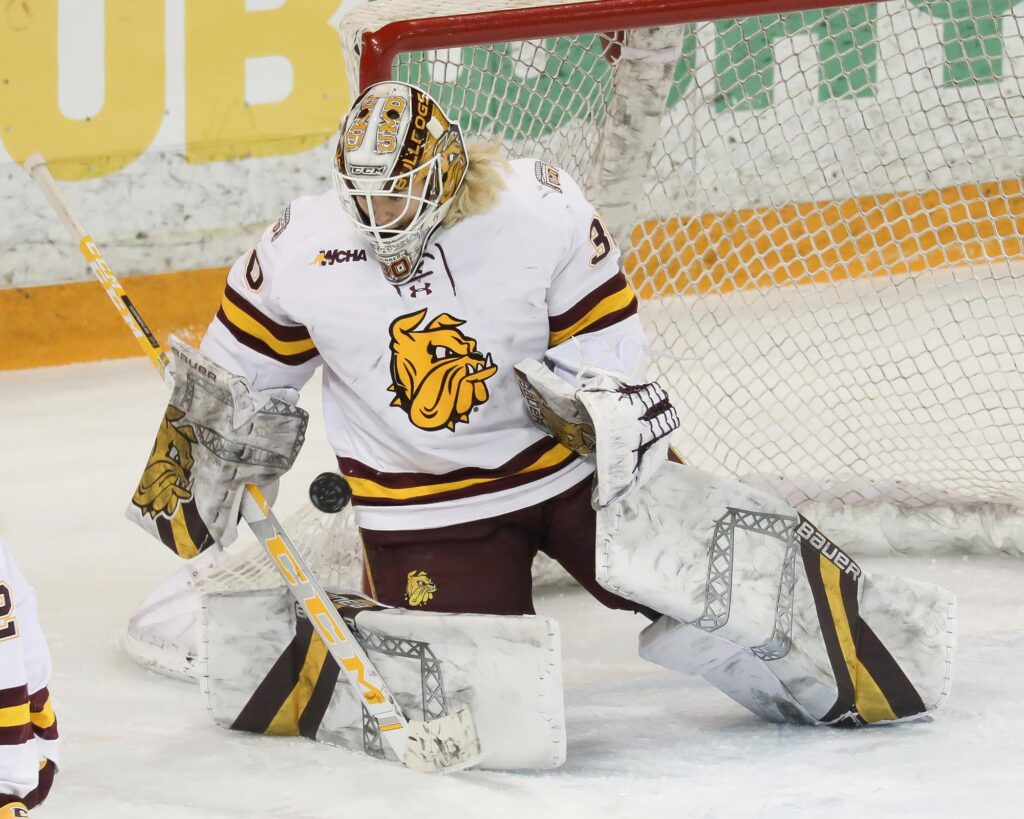
As for the incoming class of 2025, it appears as there still me be many spots open – possibly as many as 10-15 slots still available. However, there may be schools that have already filled spots with commits that haven’t been publicly announced or tracked. In addition, with 2023 having an above average number of first year goalies (8 teams having 2 freshmen) and 10 teams carrying 4 goalies, the outgoing college class of 2024 goalies may not all be replaced. But on the positive side, there has only been one 2025 goalie publicly announced commit amongst all 8 of the NEWHA teams – so there are likely still some openings on several of those teams.
Women’s DI College Hockey Goalies and Commits by School & Year
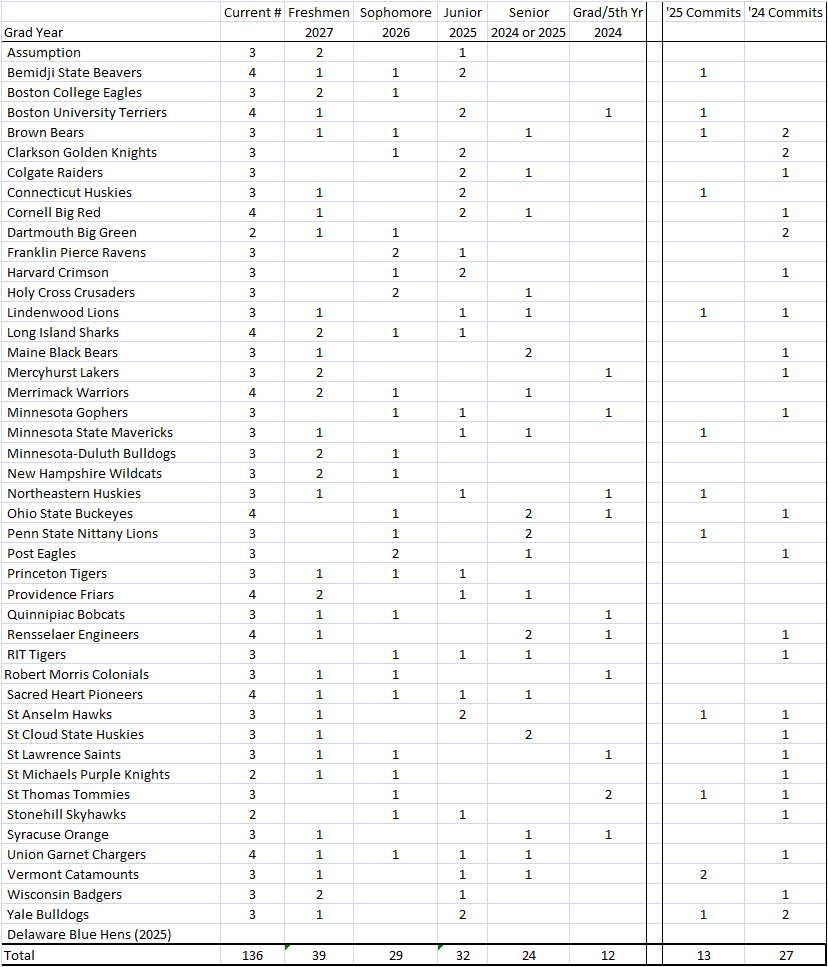
as of December, 2023
One last thought to keep in mind. Some schools might be happy to carry 4 goalies – this helps with practices and in case of injury to a goalie or two. I have had several coaches tell me that recently they have had serious injuries to at least one goalie, so having depth can be very helpful. Therefore, if you want agree to be a 4th goalie you may be able to be rostered and practice on a team but you probably won’t be guaranteed playing time – almost surely will not see any scholarship money unless you move up in the depth chart. If the school is more important to you than playing time, this could be an option.
